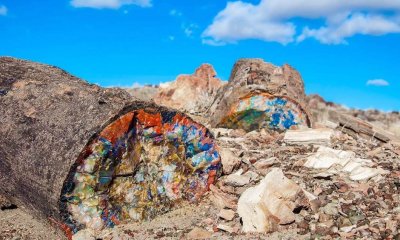Hawaii
7 of the Most Dangerous Animals Found in Hawaii
Hawaii is well known for its picturesque palm trees and sandy beaches, but many people don’t realize that the islands are home to a hugely diverse amount of wildlife. The Hawaiian Islands are the most remote island on earth (2,300 miles from the nearest continent!!), and as a result, there are tons of animal species that can’t be found anywhere in the world but there. How cool is that?! Pretty cool! Although, some of them can be quite dangerous. Check out this list of the most dangerous animals found in Hawaii.
1. Centipedes
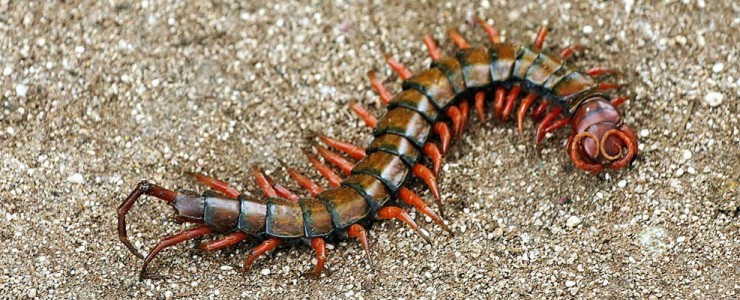
Of the over 8000 species that exist worldwide, Hawaii happens to be home to three types of centipedes: Scolopendra, Lethobius, and Mecistocephalus. It isn’t at all uncommon to find these creepy, crawly guys in your home, because they love damp places like kitchens and bathrooms.
If the ridiculous number of legs didn’t horrify you enough, I’ve got worse news — some of them bite! Bites from these many-legged creatures can last several seconds, as they commonly continue biting you till you swat them away. The bite is commonly described as a painful burning sensation that spreads several inches. Apparently it can be downright agonizing if you have the bad luck to get bit in a place with tons of nerve ending, like your fingers or toes. Some good news: unless you’re especially sensitive or you have an allergic reaction, you shouldn’t need to head to the hospital. Chances are the bite will be feeling better in under a week!
See also: Hawaii State Fish
2. Sharks
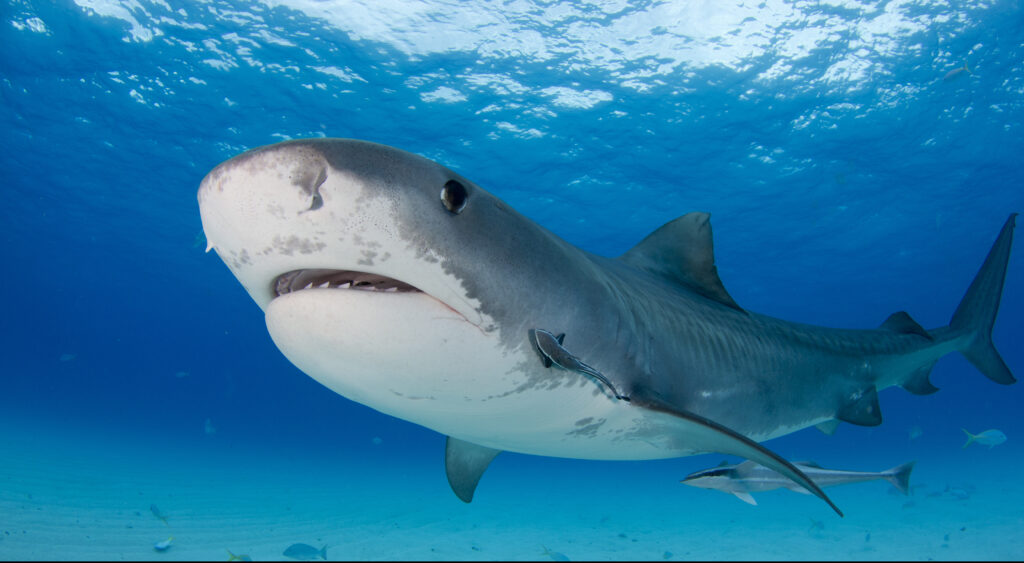
The warm waters of the Pacific Ocean draw visitors from all across the country and beyond, but us humans aren’t the only ones who enjoy the bright blue surf. Forty-one different species of shark are known to live in the waters surrounding the Hawaiian Islands. That’s a whole lot of teeth.
Notable among the most dangerous are some types that you’ve undoubtedly heard of. Hammerhead Sharks, Great White Sharks, Tiger Sharks, Bull Sharks, Mako Sharks, and Galapagos Sharks all call Hawaii home. A sunrise or sunset ocean dip probably sounds super romantic, but it might not be the best idea. These are the times of day that sharks love to go hunting, and their diet includes a laundry list of things from your typical squid, fish, and turtles, to seals, dolphins, birds, dogs, even pieces of boats on occasion and, you guessed it, people.
According to the Hawaiian government’s web page, there were ten attacks total last year, one of which was fatal. How do you like your odds?
See also: Dangerous Animals in North Carolina
3. Jellyfish
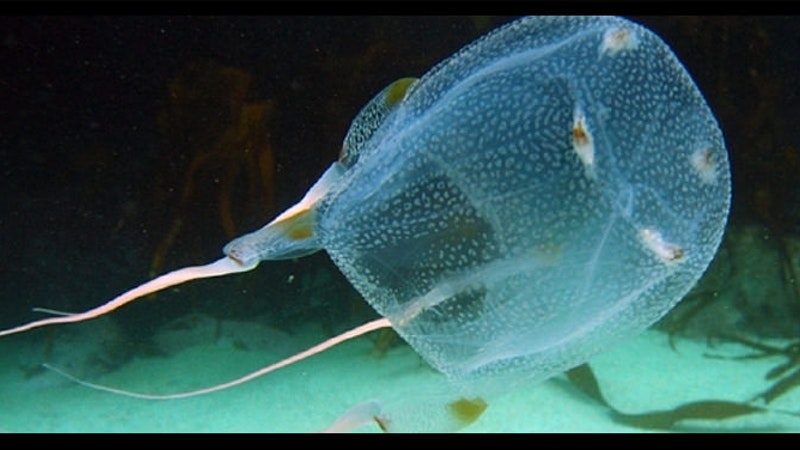
Several types of jellyfish float around in Hawaii’s waters. One of the most well known is probably the Box Jellyfish, of which three species can be found. This jellyfish is named for the corners that characterize its bell-shaped body. At a glance, you will see that its body only measures a few inches at most, and you might develop a sense of false safety.
Attached to the tiny body are tentacles that can reach up to two feet long and deliver a nasty sting. Even scarier than the Box Jellyfish is the Portuguese man-o’-war , which is technically not a jellyfish, but is part of the same phylum. If you thought two-foot tentacles were scary, head back to the hotel, because these guys tentacles can reach up to thirty feet!
Because their small body has a purple or blue hue, you’ll never seem them floating towards you in the water, and their stings are extremely painful! Making it one of the more cunning of the dangerous animals in Hawaii.
See also: Dangerous Animals in Georgia
4. Crown of Thorns Starfish
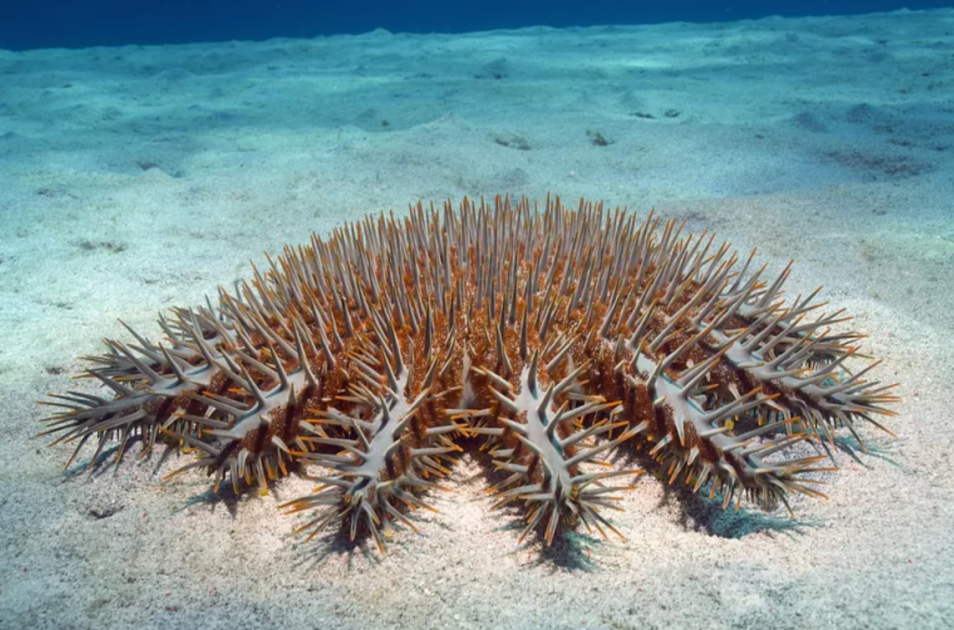
This starfish is actually one of the largest in the world! Its name derives from the look of the venomous spines that cover its surface. Typically spanning from around 10-14 inches, this starfish is known to have upwards of twenty “arms.” And its bad news if you come into contact with any of them. The spines covering the starfish’s body are stiff, sharp and capable of penetrating through soft surfaces. So, if you accidentally touch or step on one, you’re in for a dose of extremely painful neurotoxins that will last for hours, causing persistent bleeding, nausea, and vomiting, and tissue swelling. Many of these symptoms can last up to a week. If you’re very unlucky and a piece of the spine becomes embedded in your skin, you’ll definitely need to see a doctor to have it removed. No Patrick Star vibes to be found here!
See also: Dangerous Animals in Arizona
5. Eels

Eels have a nasty reputation for being one of the most dangerous animals that you can encounter in Hawaii. Moray eels, Dragon Moray eels, Snowflake Moray eels… take your pick. They love living in coral-encrusted areas that have tons of small, rocky openings, and they’re all known for having sharp, razor-like teeth that can do some major damage if you find yourself in the wrong place while scuba diving or swimming.
Eels can strike at a lightning-fast speed, and because their super sharp teeth are curved inward, it’s impossible to escape from their bite. Muscle and tendon damage are a common result of eel bites, and it’s possible to completely lose fingers as well. Large eels can be up to five feet long, and they’re known not only for being aggressive but also for not being picky eaters at all, so do your best to avoid these guys like the rest of the pros do!
6. Snails
That’s right, even the unsuspecting little ones are some of the most dangerous animals in Hawaii. I bet you thought snails were pretty chill, slowly moving through life with their house on their back and a gross, slobbery trail extending behind them. Not the case for some species, like the Cone Snail, of which Hawaii has 34 varieties. These species are characterized by their beautiful patterns and colors which would make them super tempting to pick up and put in your pocket if you happen to see one while on a casual beach stroll, but don’t. In fact, these snails are carnivorous and hunt using a harpoon style tooth that they deploy to incapacitate their victims.
For many of the species, getting stung will amount to something similar to a painful bee sting. Some species, though, are highly venomous and could result in death. Is the risk worth it to add that new shell to your collection?
7. Scorpions
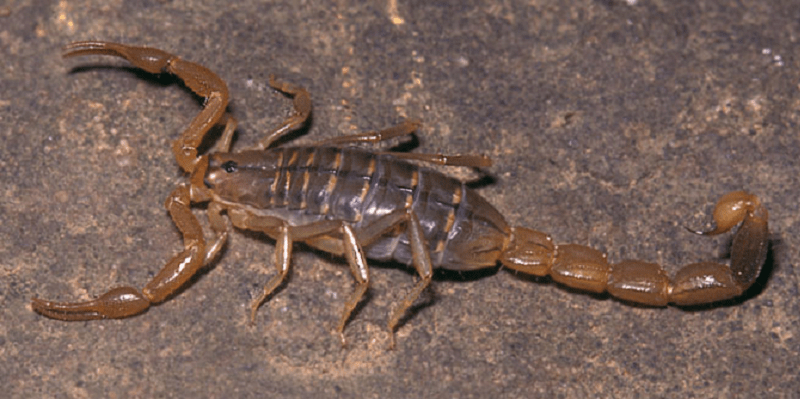
You aren’t likely to see a scorpion while in Hawaii, because they’re great at hiding! It isn’t often that even residents of Hawaii see them. However, the Lesser Brown Scorpion does call Hawaii home. Specifically, they love attics, basements, and areas with water like kitchens and bathrooms. Since scorpions are nocturnal, you’re more likely to run into them in those places at night, which doesn’t make for a great surprise. Luckily, the sting of this most common Hawaiian scorpion isn’t venomous, but the bite alone will be extremely painful and cause discomfort for an extended period of time. Couple that with swelling and nausea for days? Not a good time. Channel your inner native Hawaiian and steer clear.
What do you think? Are the sunny rays and cerulean waters still calling your name? Or are you staying home with the doors locked?
















